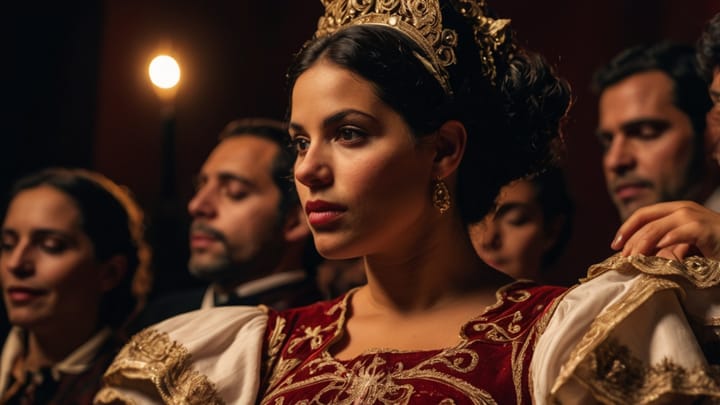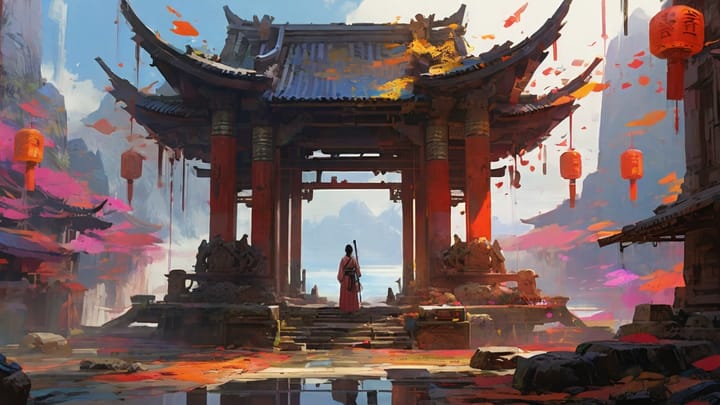When picturing samurai, we often think of brave and noble male warriors. But what about the women?
For centuries, the female samurai, or onna-bugeisha, have been an integral part of Japanese society. These powerful women were skilled in the art of war and often fought alongside the male samurai in times of conflict. In a country that is primarily known for its male-dominated history, the onna-bugeisha offer a fascinating glimpse into the roles women played in Japan’s past.
In this article, we will take a look at the onna-bugeisha, the female samurai of Japan.
The origins of the female samurai
The onna-bugeisha (女武者) – literally “female martial person” – were a class of noblewomen and members of the warrior class (bushi 武士) in feudal Japan. These women also embodied the traditional practices and philosophies, such as Zen, which have profoundly influenced various aspects of Japanese life, including the warrior class.
Trained in both traditional household arts and self-defense, they fought alongside samurai men, illustrating how Zen principles of discipline, focus, and harmony were integral to their roles.
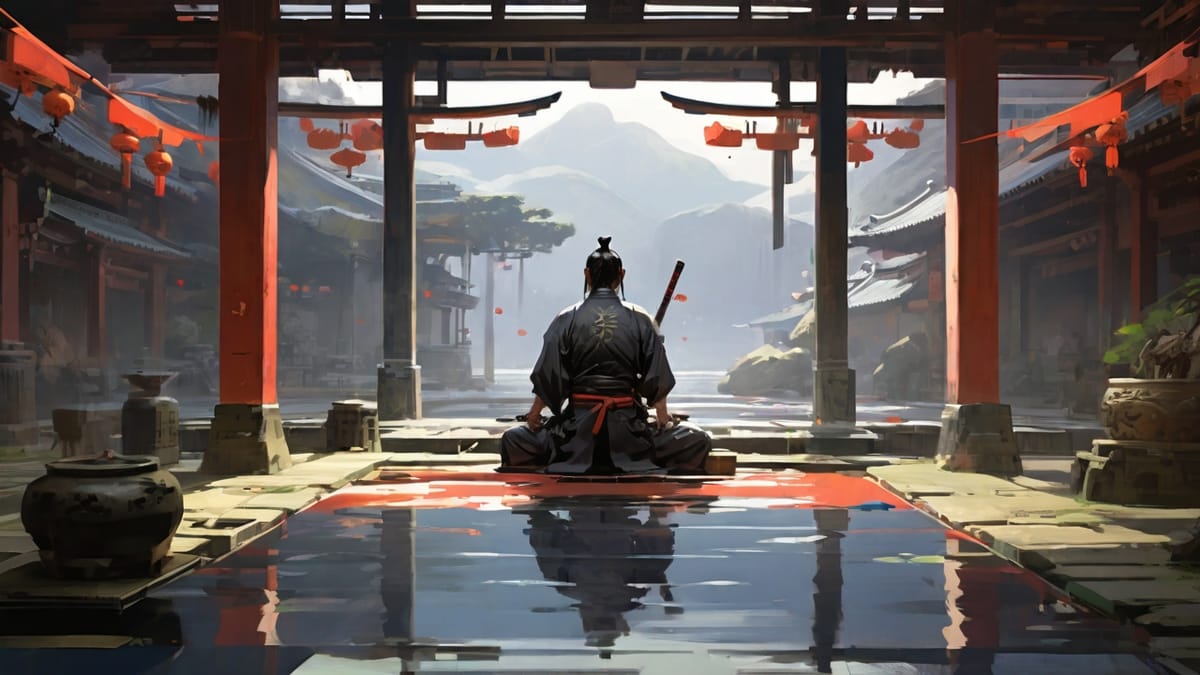
During Japan’s feudal period, many samurai families found themselves in need of extra protection. As a result, they began training their daughters in the art of war. These women became known as onna-bugeisha – the female samurai. While they did not fight as often as their male counterparts, the female samurai were considered just as skilled in battle. But despite their skills and bravery, they are not well known outside of Japan.
The female samurai were also not as well-known as the male samurai. But they still played a significant role in Japanese history. Their exact origins are unclear, but the first female samurai are thought to have appeared during the Genpei War (1180-1185). This was a time of great upheaval in Japan, as two powerful clans—the Taira and the Minamoto— battled for control of the country.
During the Edo period (1603-1867), the female samurai were often responsible for defending their homes and families in the absence of the samurai. Japan enjoyed a period of great peace during that time, but there were still occasional skirmishes between rival clans. In these cases, the female samurai would fight alongside the samurai to defend their homes.
They were also active during the Meiji Restoration (1868-1912), a time of great change in Japan. This period saw the end of the samurai class and the rise of modern Japan. During this time, many onna-bugeisha became involved in the movement to overthrow the Tokugawa shogunate.
Why are female samurai largely overlooked in Japanese history?
While male samurai are celebrated and honored in Japanese society to this day, female samurai are largely overlooked. The role of women in Japan has always been complex and multi-layered, with women occupying a variety of positions in society. However, the stories and accomplishments of onna-bugeisha are often left out of the history books. That can lead to their unique contributions being underestimated.
But how did this happen?
The Meiji Restoration was a time of modernity, industrialization, and Westernization that led to the decline in power for the samurai class. Consequently, the legacy of onna-bugeisha diminished as well.
Westerners have traditionally revised the history of Japan’s warring culture to focus primarily on samurai and submissive women in kimonos rather than including the heroic quests of female warriors. According to historian Stephen Turnbull, the stories of female samurai are some of the most remarkable untold tales in samurai history.
However, research from recent years has also indicated that Japanese women were not uncommon in battle. Evidence from the Battle of Senbon Matsubaru in 1580 shows that 35 out of 105 bodies discovered were female.
What was the role of female samurai in combat?
In a time when men ruled the battlefield, onna-bugeisha fought alongside them as equals. They were highly skilled in the art of combat. While the number of female samurai was relatively small, they were broadly respected for their courage and prowess. They had impressive fighting skills and they’ve become some of the most feared warriors in all of Japan.
The female samurai were not called upon to fight as often as the male samurai. But they still played an important role in combat.
Although the majority were from noble or samurai families, some commoners also received training. These women were often responsible for defending their homes while the men were away at war. Nonetheless, in some cases, the onna-bugeisha even took part in frontline combat. And they were even known to lead armies of their own.
In times of peace, they would often practice their skills by taking part in mock battles.
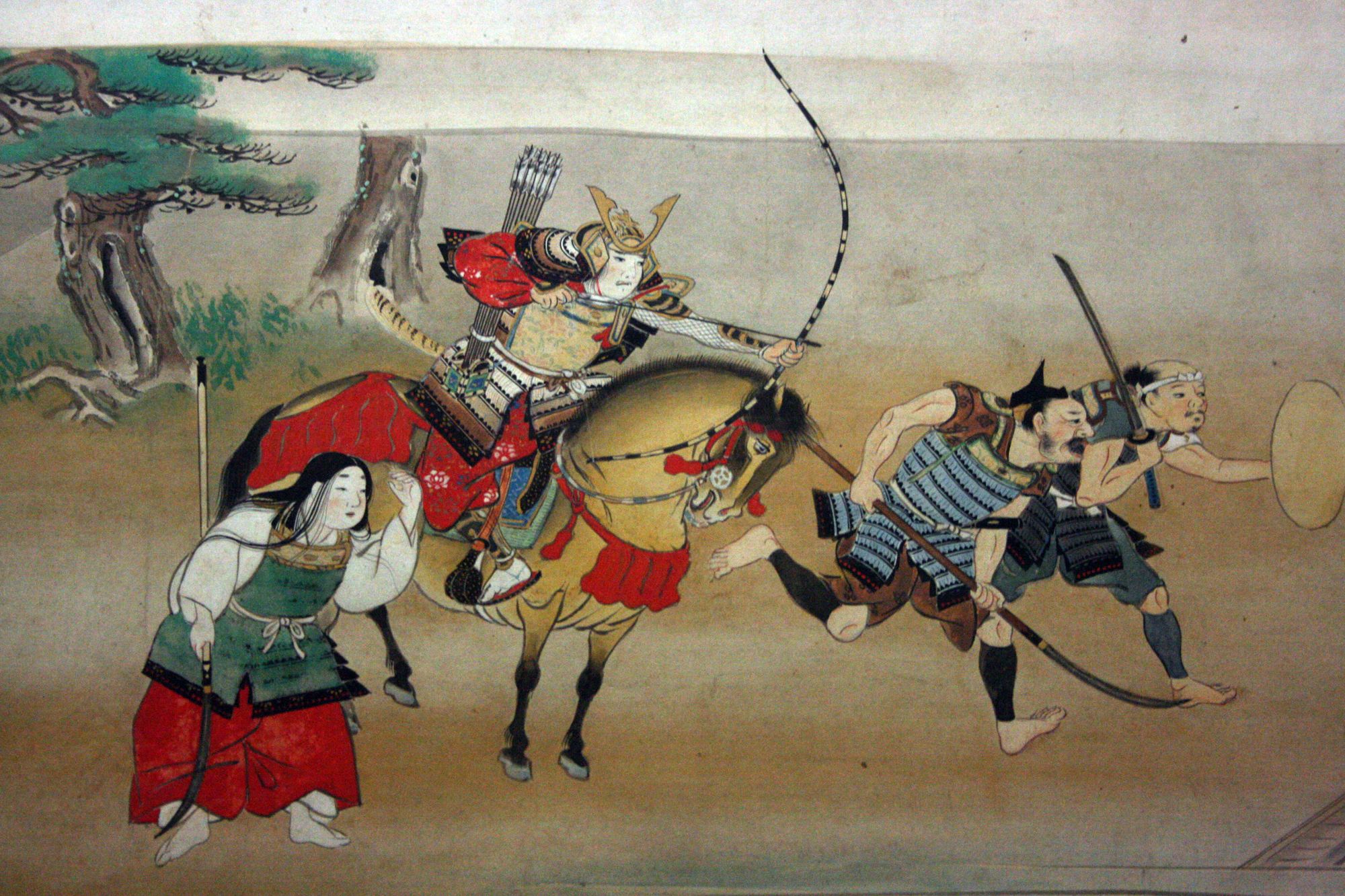
Women and men in the Night Attack on Yoshitsune’s Residence At Horikawa, 16th century. Source: Wikimedia Commons
How did female samurai’s weapons and training look like?
Onna-bugeisha underwent rigorous training from a young age, and many of them achieved great feats on the battlefield. Trained in the use of a variety of weapons, they were considered to be formidable opponents on the battlefield.
Perhaps their most iconic weapon was the naginata (なぎなた, 薙刀), a long pole with a curved blade at the end. This weapon was particularly effective against cavalry, as they could use it to slash at the horses’ legs. This was crucial as female samurai were often tasked with protecting the male samurai from such attacks.
In addition to the naginata, they were also skilled in the use of the yumi (弓), a Japanese bow. The yumi was a powerful weapon, and the onna-bugeisha could use it to great effect in battle.
Some were also skilled with dagger-like weapons called kaiken (懐剣). Female samurai were typically armed with a selection of these weapons, depending on the situation they were facing. Besides that, they were also trained in the use of armor and horseback riding.
There are also some famous female samurai and their heroic stories
Though they are often left out of the history books, there were plenty of badass ladies fighting alongside their male counterparts during Japan’s feudal period. Some of the most famous onna-bugeisha include Nakano Takeko and Tomoe Gozen. But there were many more who have been forgotten by history.
Empress Jingu
Empress Jingu was a powerful Japanese ruler who stepped in after her husband’s (Emperor Chūai, the 14th emperor of Japan) death to take over his duties in 200 AD. She quickly became revered as the onna-bugeisha who took charge and led an invasion of Korea in 200 AD after her husband tragically died in battle. This makes her the first female samurai in Japan and the world.
Tomoe Gozen
Tomoe Gozen was a 12th-century noblewoman who served Minamoto no Yoshinaka—one of the primary commanders during the Genpei War. She was known for her bravery in battle and her skills with a sword and naginata.
For centuries after Tomoe Gozen’s reign, female samurai flourished and made up a large part of the Japanese samurai class. Female warriors not only protected villages but opened schools that taught martial arts and military strategy to young women across the Japanese empire. In Japan, there were numerous clans scattered across the land. Everyone had samurai warriors. And all of them were open to the onna-bugeisha.
Hōjō Masako
Hōjō Masako was the wife of the first shogun of the Kamakura period (1185-1333), Minamoto no Yoritomo. Not only was she a female samurai, but she also played an essential role in politics. She even was the first onna-bugeisha to enter politics. After her husband’s death, she became a Buddhist nun, as many samurai widows did. But she still kept up her involvement in politics.
Not only that, but she also played a key role in shaping the careers of her two sons, Minamoto no Yoriie and Minamoto no Sanetomo. Both went on to become Shōgun, with Yoriie holding the title for one year and Sanetomo ruling for sixteen.
Nakano Takeko
Nakano Takeko led a group of samurai women into battle against the forces of the Meiji Empire and died tragically young during the Battle of Aizu at Aizuwakamatsu castle. She was famed for her prowess with a naginata. Nakano and her fellow onna-bugeisha fought bravely, but they were outnumbered and outgunned by the enemy. Nakano was mortally wounded in the battle, and she is said to have asked her sister to cut off her head so that it would not fall into enemy hands.
The Battle of Aizu is considered the last stand of the onna-bugeisha, and Nakano Takeko is widely believed to be one of the greatest female samurai warriors.
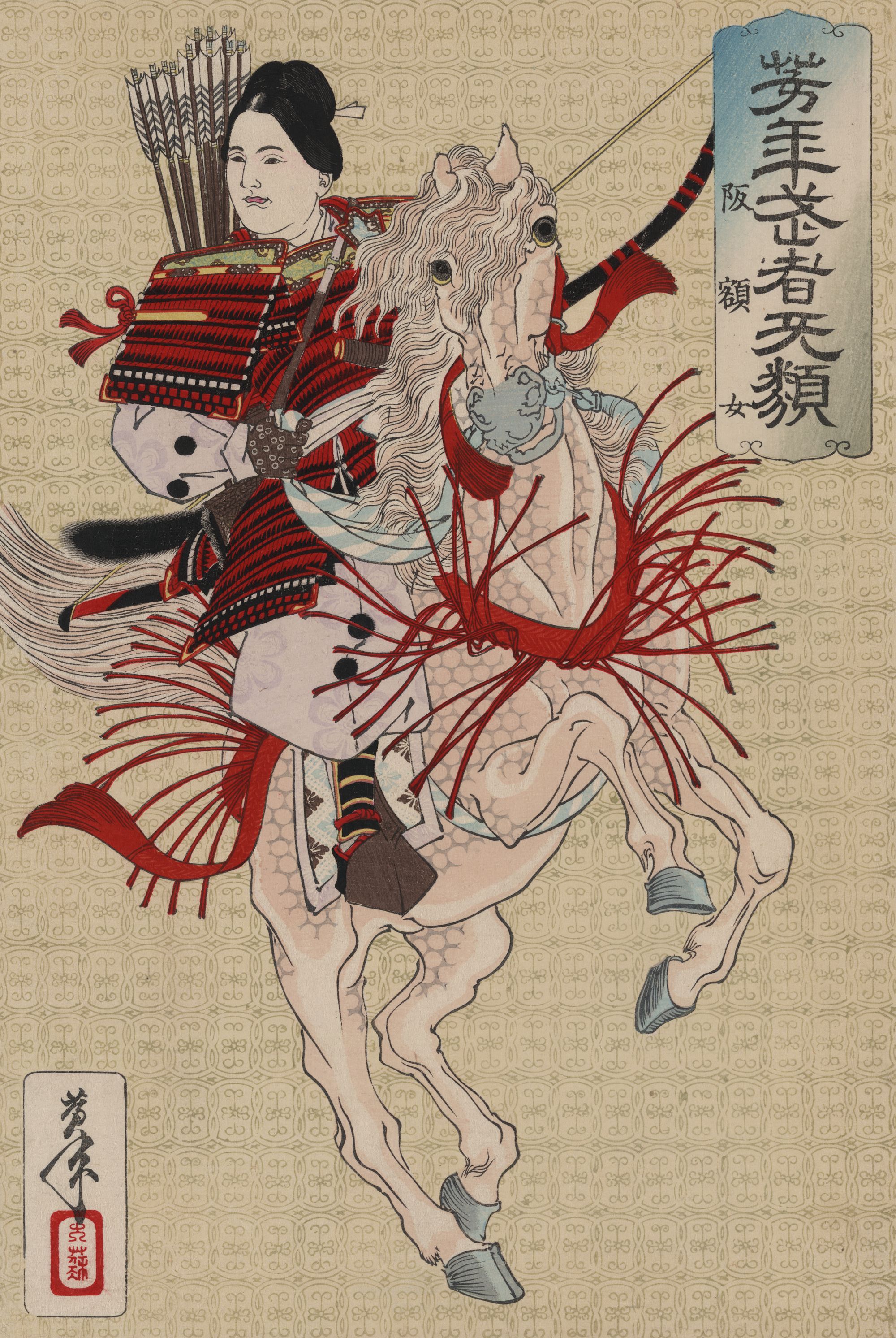
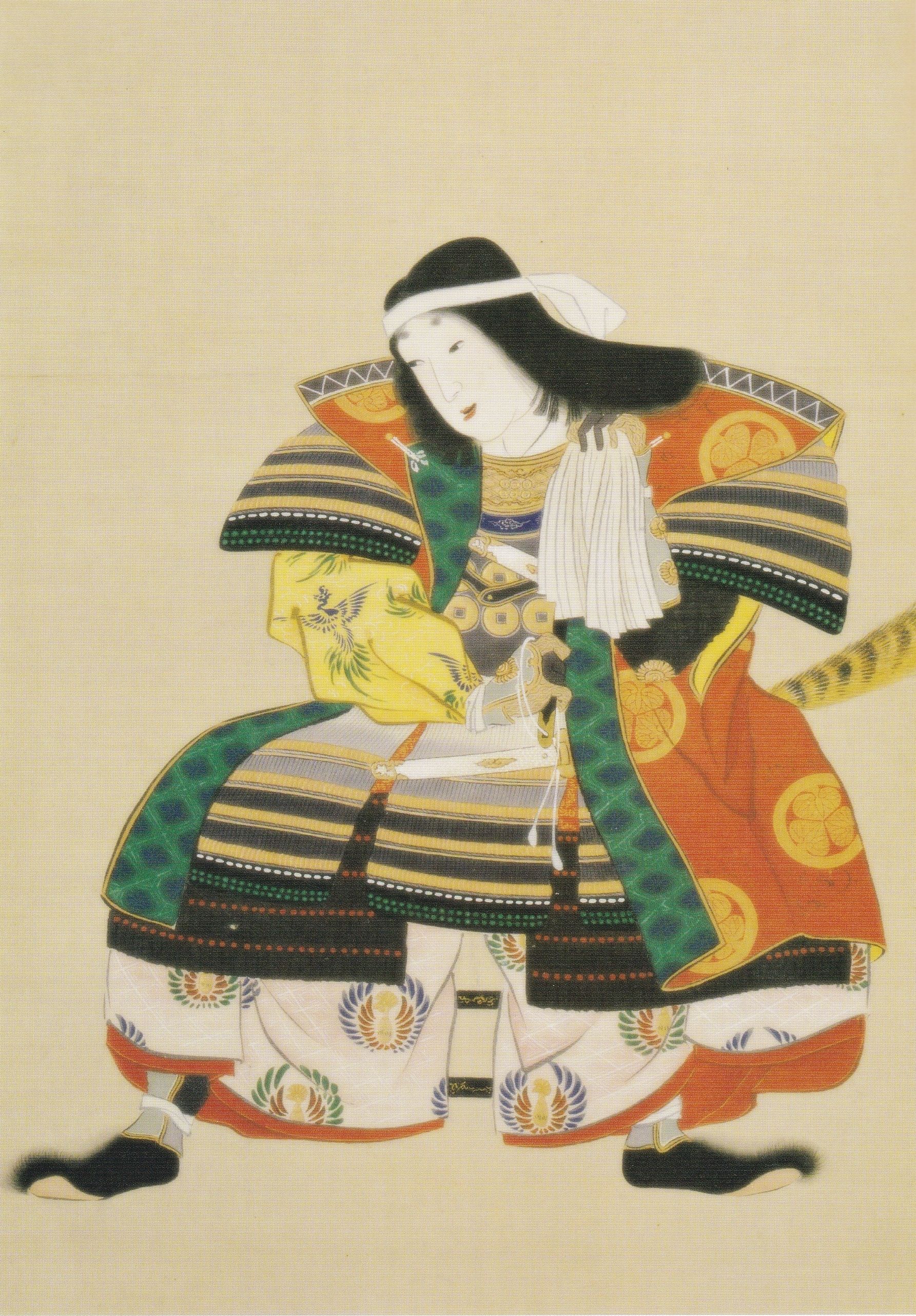
Left: Hangaku Gozen. Source: Wikimedia Commons // Right: Komatsuhime was believed to have fought in the siege of Ueda and challenged Sanada Masayuki at the entrance of Numata Castle. Source: Wikimedia Commons
The legacy of the female samurai
During the Edo period, the peace and stability brought about by the Tokugawa shogunate meant that there were no major wars for almost 300 years. As a result, the role of the female samurai diminished over time. However, they continued to be revered as symbols of strength and courage.
Today, some schools teach the art of onna-bugeisha to those interested in learning about Japan’s martial heritage. And in more recent times, female samurai have been featured in popular media, such as cinema and manga. These depictions often emphasize the onna-bugeisha‘s strength, courage, and determination. Though they are no longer needed for battle, the spirit of the onna-bugeisha lives on in contemporary Japanese culture. The female samurai continue to be a source of inspiration for many young women today.
Apart from that, female samurai have lately been increasingly celebrated and honored in Japan.
In 2008, the Japanese government posthumously recognized Nakano Takeko with the Order of the Precious Crown, an award given to individuals who have made outstanding contributions to society. This is a fitting tribute to the bravery and dedication of female samurai throughout Japanese history.
In 2017, the Japanese government officially designated five female samurai as important cultural assets. The five women chosen were Tomoe Gozen, Nakano Takeko, Hōjō Masako, Yamakawa Takeko, and Nakano Shige.
Besides that, there are memorials and statues dedicated to these brave women that commemorate their courage and commitment. There is a statue of Tomoe Gozen in the city of Kamakura to honor her legacy, and a museum dedicated to female samurai in Seki City, Gifu Prefecture. This museum contains artifacts from female samurai warriors and displays detailing their history and contributions to Japan.
Nowadays, female samurai are celebrated as brave heroines who helped shape Japan’s feudal period. Their story is one of strength and resilience, and it serves as an inspiring reminder that women have always been capable of great things.
What can we learn from the female samurai?
The onna-bugeisha offer us a glimpse into an ancient time when women were already just as capable as men of being brave and skilled warriors. In a time when women are still fighting for equality, the story of the female samurai is an inspiring reminder that women are capable of great things.
And the fact that women in ancient Japan could have a high social standing shows us how far we still have to go in terms of achieving gender equality. These women also remind us that loyalty, strength, and bravery are not qualities exclusive to men.
It is also crucial to highlight that history is often revisioned and biased, depending on who is writing it. For example, many people believe that women in Japan were all submissive women in kimonos when this could not be further from the truth.
And there is so much we can learn from these stories if they were just told accurately. We shouldn’t blindly follow everything we read. It is essential to do our own research and come to our own conclusions.
The legacy of female samurai teaches us that we all can rise above any challenge and that women have always been capable of outstanding accomplishments. The story of the onna-bugeisha is one that should be shared and remembered, to ensure these brave warriors are not forgotten.



